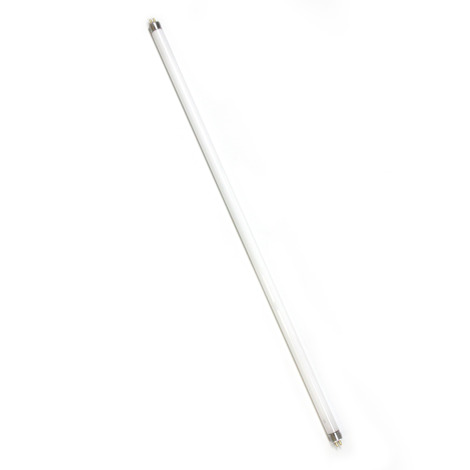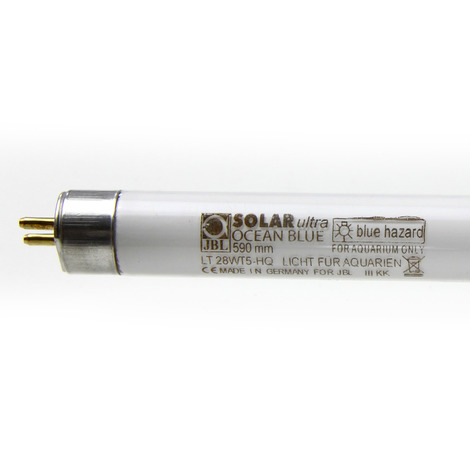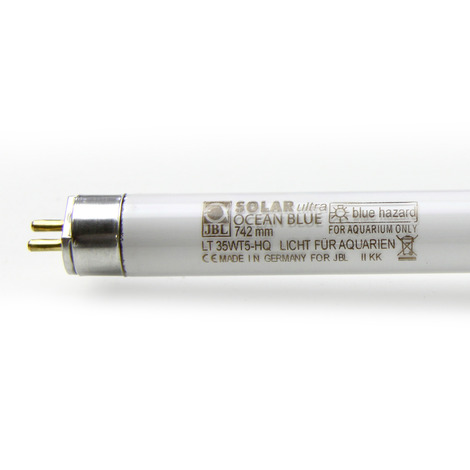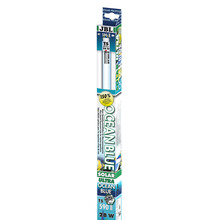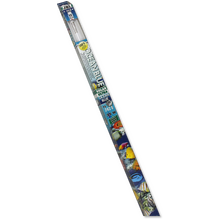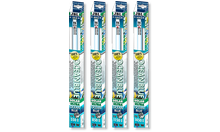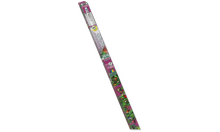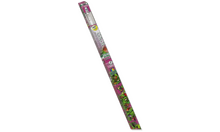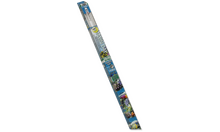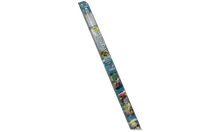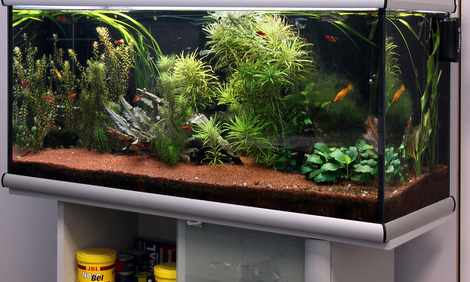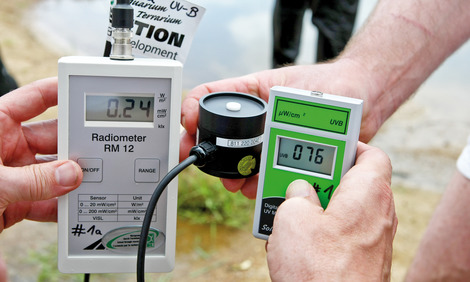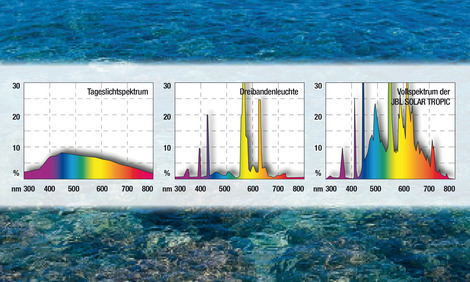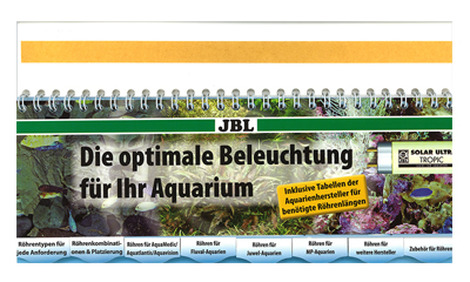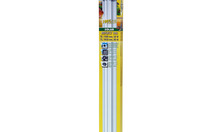Light as energy source
Most corals in aquariums need sufficient light. They often feed only from the metabolic products of the algae, which live in their tissue. Corals which don’t feed photosynthetically prefer dark places and need to be fed with phyto and zooplankton (JBL KorallFluid, JBL PlanktonPur). To ensure ideal growth it is important to know and to reproduce the light requirements of the individual corals in the marine tank.
Actinic light:
The JBL SOLAR MarinBlue tube generates a strong blue light which is also referred to as actinic light. It is a particularly effective short-wave light from the blue and ultraviolet spectral range. When this tube alone is switched on it creates the glow of the corals and the desired moonlight effect. The actinic spectral range of this tube accentuates the fluorescence of corals and clams (e.g. Tridacna). The JBL tube doesn’t generate a pure actinic spectrum, but has spectral components added which are especially suitable for the light in marine aquariums. It is NOT useful to illuminate marine aquariums with actinic light alone since the corals in our care don’t originate from great depths but mostly from depths up to 20 m and thus receive strong sunlight. The combination of JBL SOLAR MarinDay and JBL SOLAR MarinBlue is perfect. If you only install one tube you should choose the JBL SOLAR MarinDay.
Easy to install
Insert the fluorescent T5 tube socket into the fixture and turn until the tube locks into place.
JBL SOLAR OCEAN BLUE ULTRA, 24-39 W
Blue actinic special T5 tube for marine aquariums
- Special blue fluorescent tube to promote the natural colouring of corals, molluscs and other invertebrates in marine aquariums
- Easy to install: insert fluorescent T5 tube socket into the fixture and turn until the tube locks into place
- Ideal colour temperature for corals, molluscs and invertebrates: reproduces the impression of deep oceans. Emphasizes and promotes natural fluorescence.
- Energy efficiency class A or B can only be achieved with bright tubes. Coloured tubes only reach energy efficiency class C
- The colour rendering is guaranteed for 2 years. Includes reminder label for replacement









